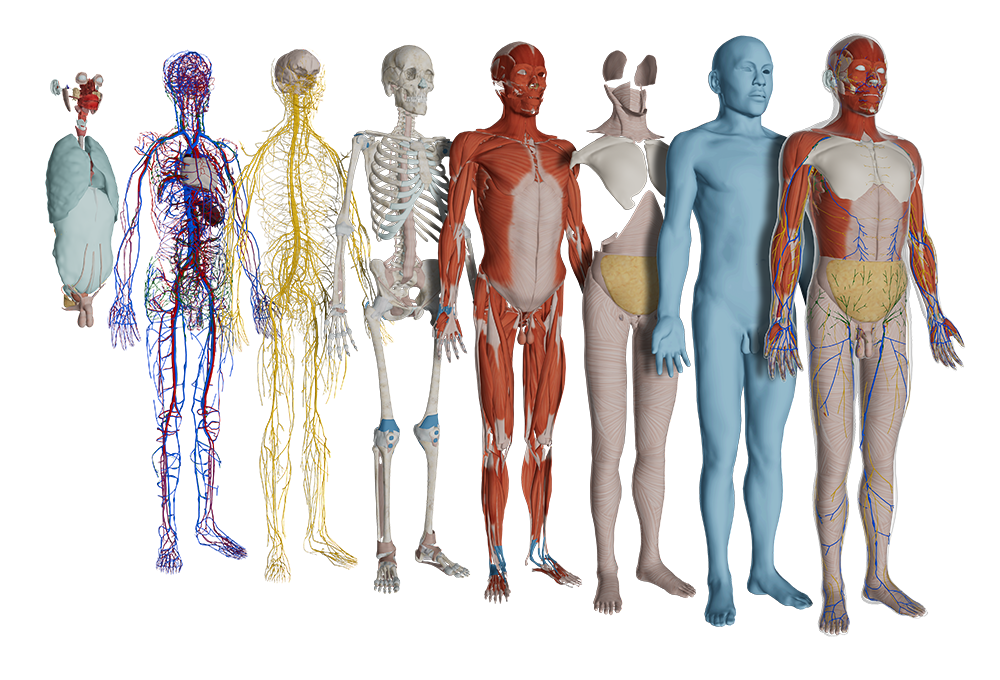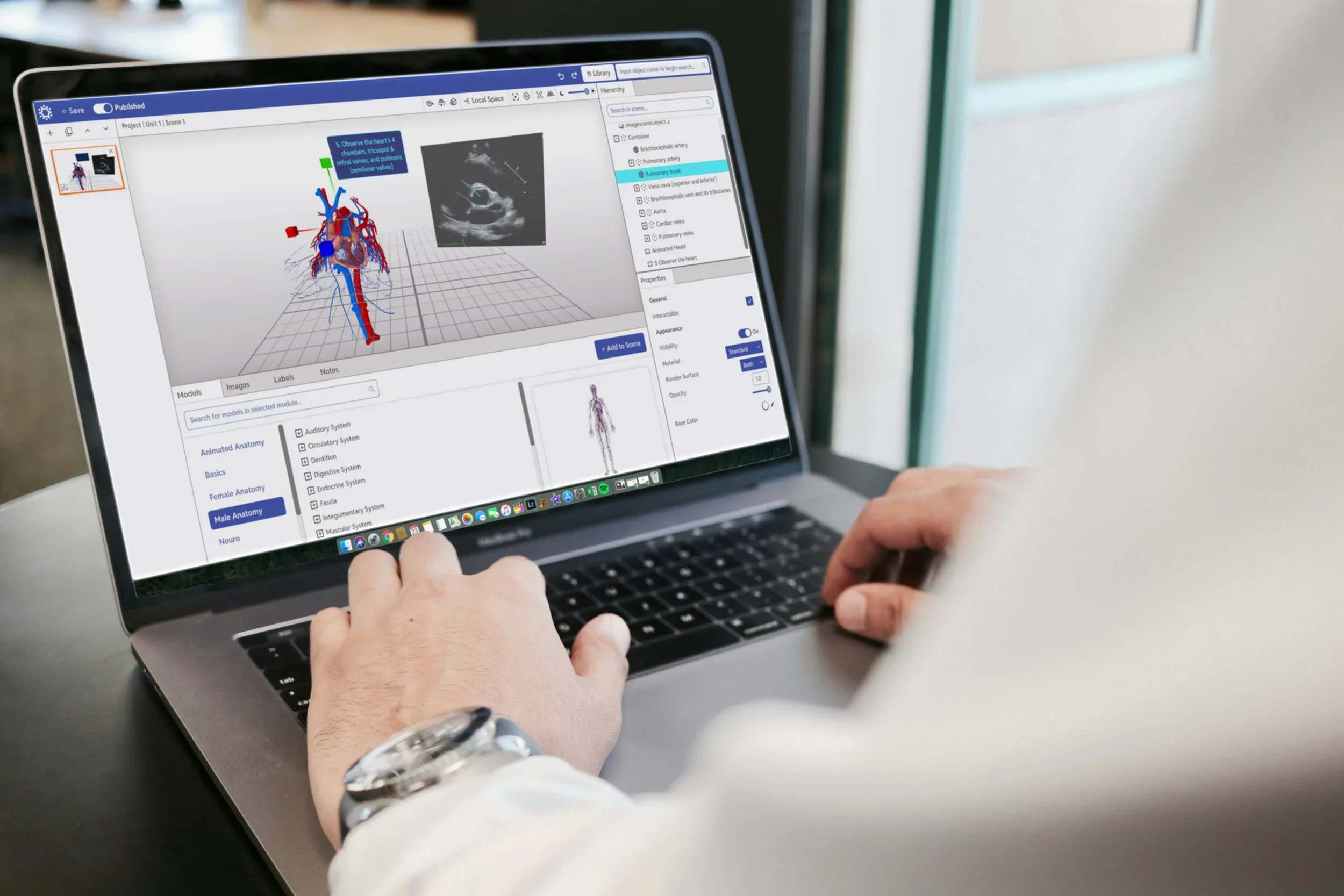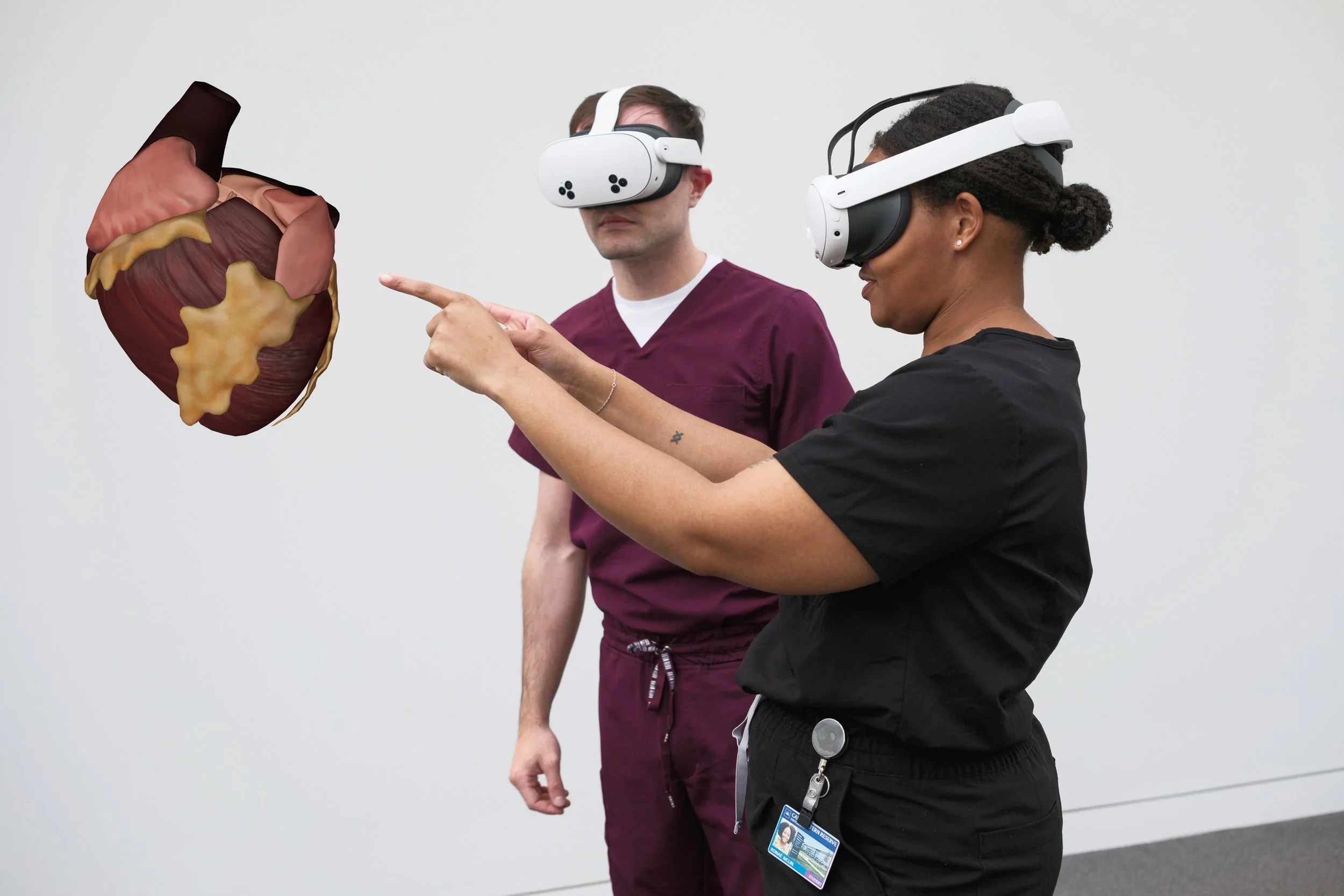Bring a New Dimension to Medical Anatomy Education
Empower medical students to build clarity, confidence, and clinical readiness through immersive 3D anatomy learning.
Origin Story:
Case Western Reserve University
Case Western Reserve University’s School of Medicine pioneered HoloAnatomy® to reimagine how anatomy is taught. By integrating mixed reality into its curriculum alongside dissection, students gained stronger clarity, confidence, and clinical readiness.
Guided exploration of life-sized 3D anatomy before dissection lab
Interactive, team-based learning with structures visible from every angle
Higher engagement, improved spatial understanding, and stronger retention
Why Anatomy Matters in Allopathic Medicine
A strong foundation in anatomy and physiology underpins every aspect of medical education. Students must not only recall structures but apply them to:
Accurately diagnose and treat patients
Perform procedures with confidence
Understand the relationship between structure and function in health and disease
Traditional methods often leave students struggling to visualize complexity. HoloAnatomy® .NEXT™ changes the game, bringing the human body to life in stunning 3D detail.
Evidence-Based Impact
Originating from Case Western Reserve University School of Medicine, HoloAnatomy® is backed by peer-reviewed research showing measurable improvements in learning:
Cut study time by up to one-third
Improve retention by up to 40%
Boost engagement & student motivation
Tailored to your curriculum
-

Give students clarity across every system
At the core of HoloAnatomy® is a validated library of expert-crafted anatomical models covering 15 male and female systems. With HoloAnatomy® Neuro, students gain access to the world’s most detailed 3D neuroanatomy visualizations.
-

Customize lessons with Hub
From their desktop, instructors use Hub to plan sessions, integrate 3D models, images, or multimedia, and align everything seamlessly with their curriculum.
-

Engage students in collaborative XR learning
With Meta Quest 3 or Microsoft HoloLens, students explore anatomy at human scale, interact dynamically with structures, and collaborate with peers in real time.
Why Medical Educators Choose HoloAnatomy .NEXT
Flexible integration: Tailored to medical curricula and accreditation standards
Evidence-based: Grounded in research, not just technology
Student-centered: Improves clarity, retention, and readiness for patient care
Faculty-ready: Designed by educators for educators
Ready to reimagine anatomy for your medical program?
Book a quick demonstration to explore how HoloAnatomy® .NEXT™ can strengthen your curriculum and empower your medical students with clarity, engagement, and clinical confidence.
-
HoloAnatomy is an award-winning 3D digital anatomy platform, originally developed at Case Western Reserve University’s School of Medicine. Built for mixed reality learning, it lets students and educators explore highly detailed, interactive holograms of the human body. By integrating clarity-focused 3D models with curriculum-aligned lessons, HoloAnatomy delivers a scalable, accessible alternative to cadaver dissection—designed to improve comprehension, retention, and engagement.
-
Using the Hub 3D anatomy app, instructors create customized lessons, labs, or case-based sessions that align directly with their curriculum. Learners then use XR devices (e.g., Meta Quest 3) to project life-sized anatomy into their real environment. They can walk around a holographic cadaver, zoom into organs, isolate systems, and reveal internal structures with exceptional clarity. This seamless, integrated approach functions like a virtual anatomy lab, supporting flexible teaching formats and driving better learning outcomes.
-
HoloAnatomy features over 7,000 meticulously crafted, color-enhanced 3D anatomy illustrations spanning 15 complete systems of the male and female human body. Developed with medical experts, the library enables exploration by system, region, organ, or custom combinations, offering comprehensive anatomical visibility for both foundational and advanced study.


